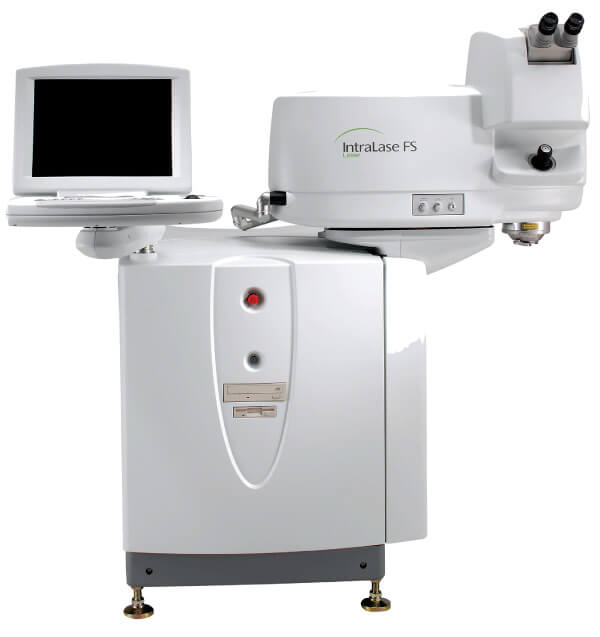IntraLase™ LASIK
Click Here For More Information
IntraLase™ has redefined the world of LASIK vision correction. Also known as bladeless LASIK, the IntraLase™ all-laser procedure eliminates the need for a metal blade during surgery, helping bring clear vision to many people who feel uneasy about going “under the knife” during LASIK.
The state-of-the-art IntraLase™ technology replaces the microkeratome blade that has traditionally been used to cut the necessary corneal flap during laser vision correction procedures. Rather than creating the flap with a blade, IntraLase™ uses laser energy to make a quick, painless incision. By replacing the hand-held blade with a computer-controlled laser, the risk of complications is virtually eliminated.
The Benefits Of IntraLase™
Because of the low risk of complications and high level of precision it provides, bladeless LASIK treatment has become the standard of care among leading LASIK surgeons and ophthalmic teaching institutions worldwide.
Compared to methods that use a microkeratome blade, this minimally invasive and incredibly precise procedure decreases the occurrence of partial flaps, holes in the flap, and other traumatic flap complications. Of the more than 500,000 IntraLase™ procedures that have been performed globally to date, there have been no reports of any serious or sight-threatening complications.

Am I A Good Candidate For IntraLase™?
An eye exam is required to see if you are a candidate for laser vision correction. Candidates must be at least 18 years old to ensure that their eyes have matured. Also, vision must have remained stable without an infection or injury for one year prior to the surgery. Ideal candidates for IntraLase™ surgery do not suffer from dry eye syndrome or any autoimmune disorder such as lupus or Sjogren’s syndrome, and have no scarring on the cornea.
How IntraLase™ Works
The IntraLase™ laser uses quick pulses (a quadrillion per second) of laser energy to create the flap in the cornea needed to correct refractive problems. The computer-guided laser pulses travel through the outer layers of the cornea, moving back and forth across the eye to create microscopic bubbles at a specified depth. The bubbles under the cornea eventually create a perforation. The surgeon is then able to gently separate the perforated tissue to create a flap, allowing him to continue with the laser vision correction procedure.
Because the laser is guided by a computer, the procedure is carried out with extreme precision and creates the optimal depth, position, and diameter for the flap specific to each patient. The entire process of creating the corneal flap takes about 30 seconds.
After The IntraLase™ Procedure
Discomfort is usually minimal following IntraLase™. You can expect to notice a significant improvement in vision the very next day. Most patients are able to resume normal daily activities, including driving and returning to work, at this time. You should, however, avoid using any eye makeup for three days following the procedure and avoid swimming and rubbing your eyes for two weeks.
Some patients experience increased sensitivity to bright light in the weeks following IntraLase™. Patients sometimes also report seeing halos around lights at night. On occasion, patients may experience dry eyes and require eye drops to increase moisture. These symptoms typically decrease shortly after the surgery.
Follow-up visits are required to make sure that the procedure went well and your vision remains crisp and clear.
Risks
IntraLase™ has proven to be extremely safe and effective. Nevertheless, no surgery is entirely free from risks and complications. Some patients experience light sensitivity. This is often temporary and can be successfully treated using steroidal eye drops for a few weeks. Also, inflammation can occur in the cornea. Though microscopic, this swelling can lead to blurred vision. This should correct itself over time. Dry eyes may also be experienced, in which case eye drops may be recommended to lubricate the eyes.
